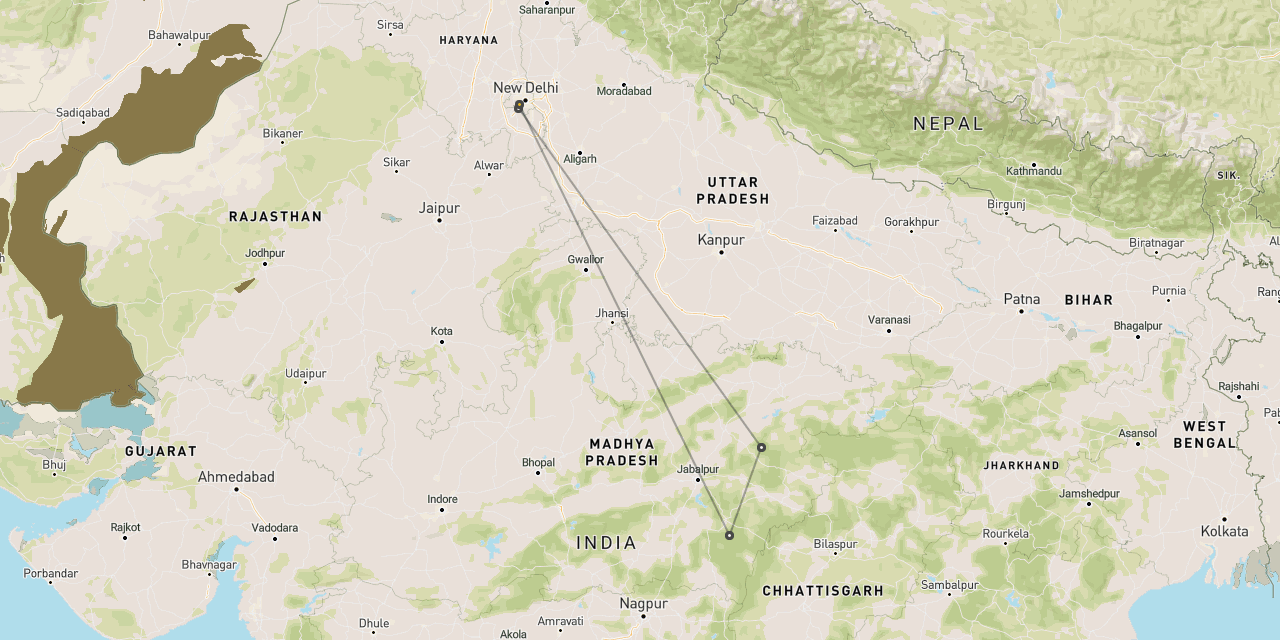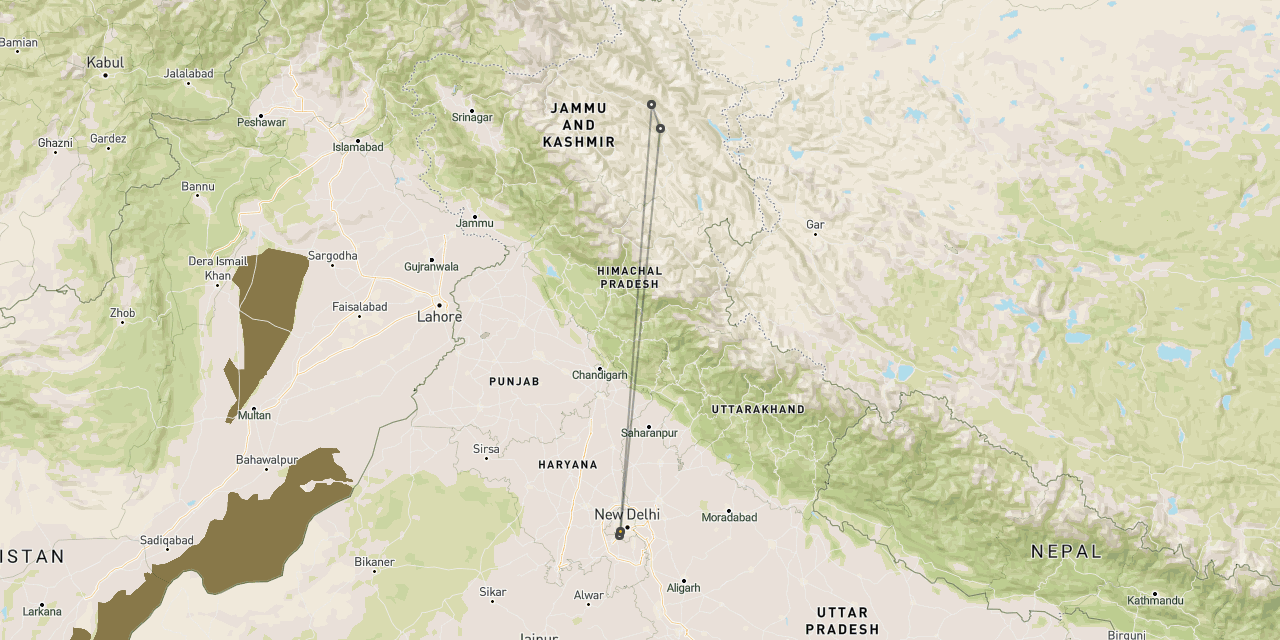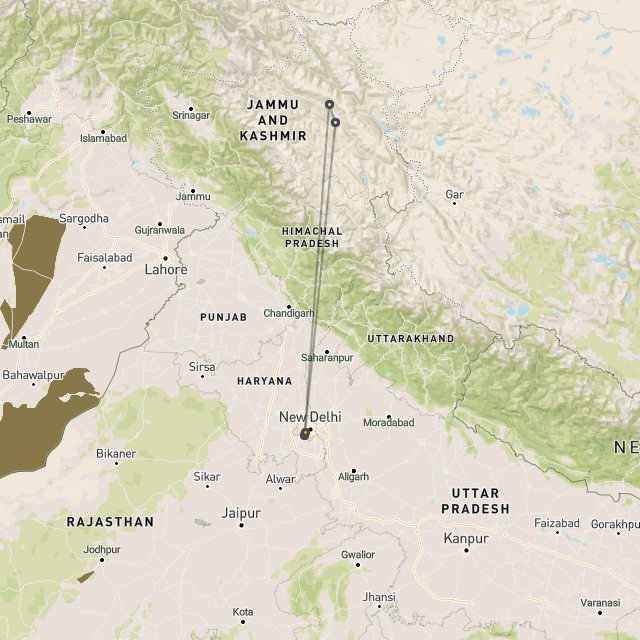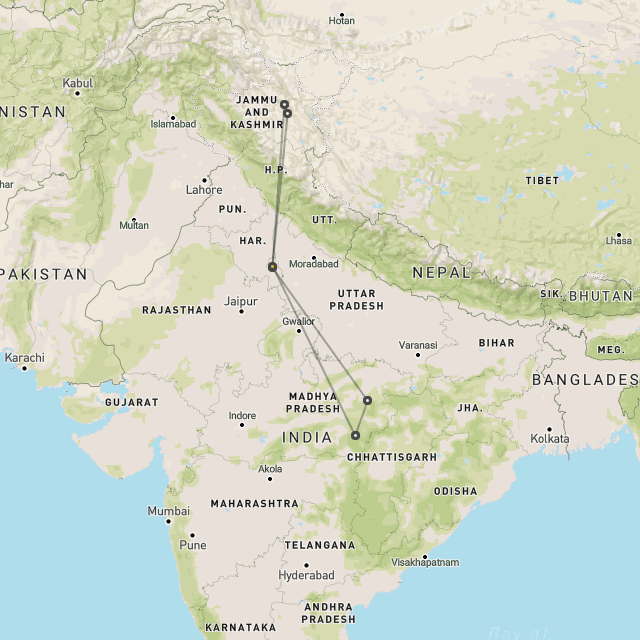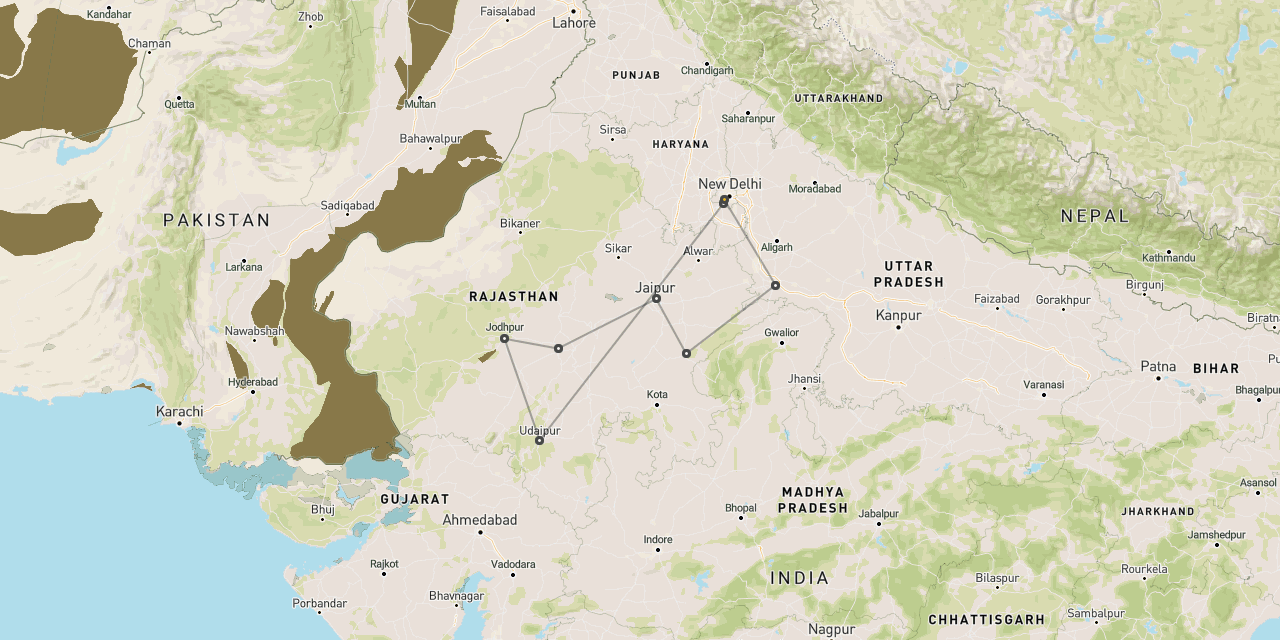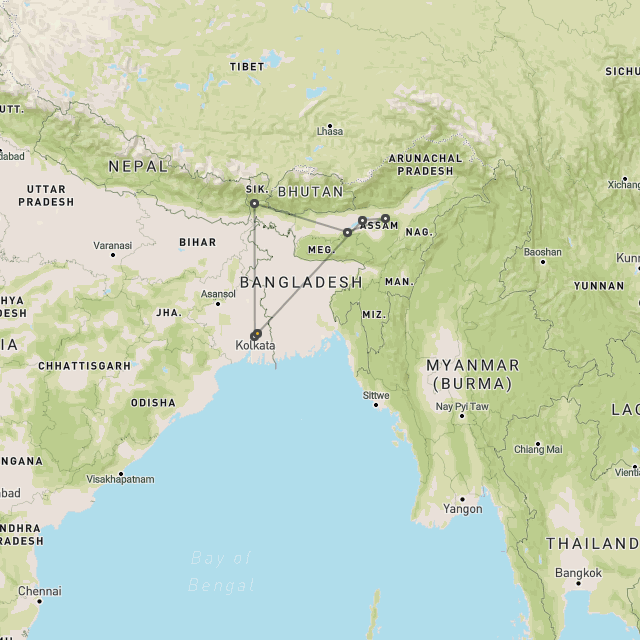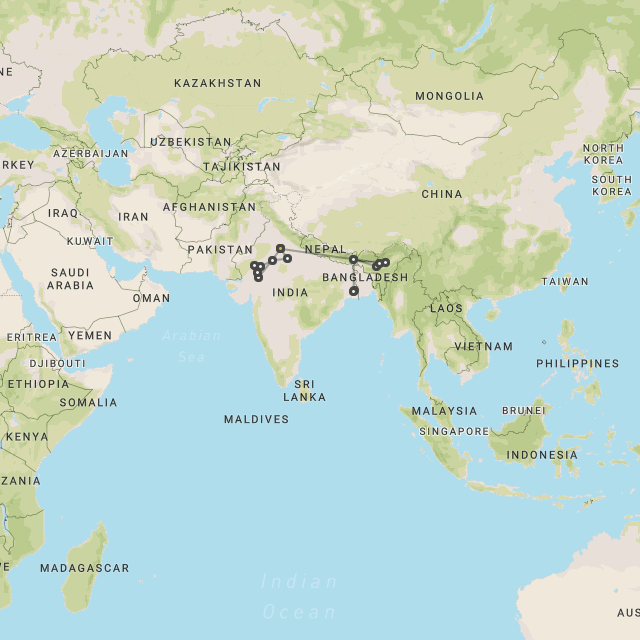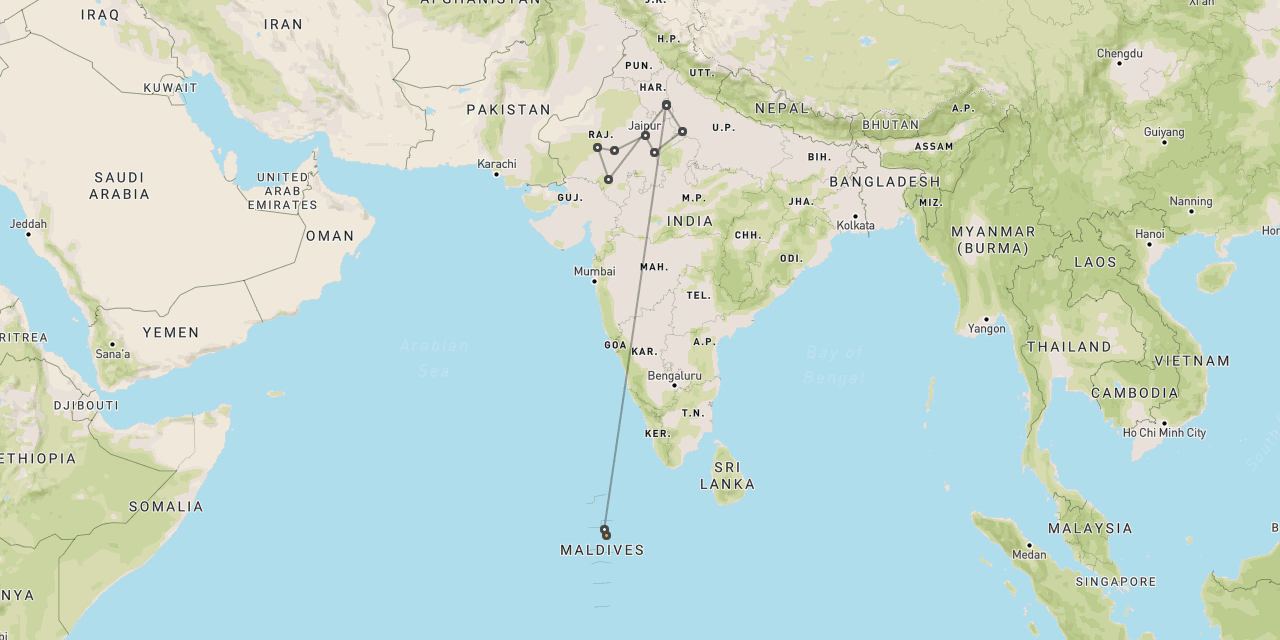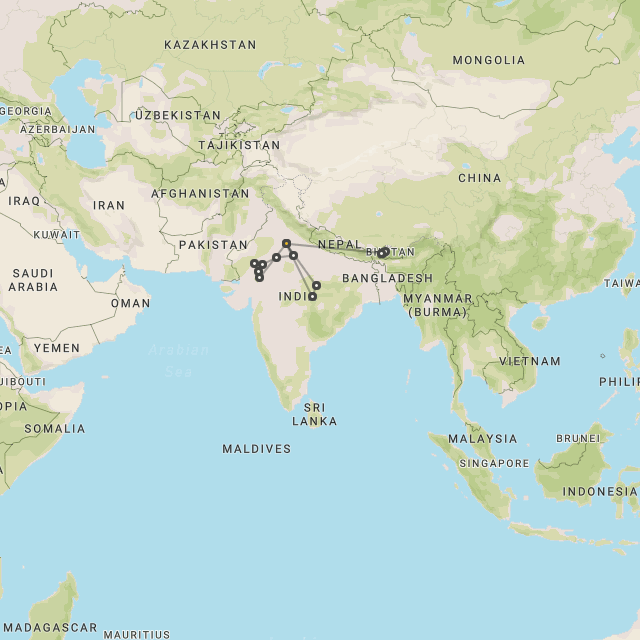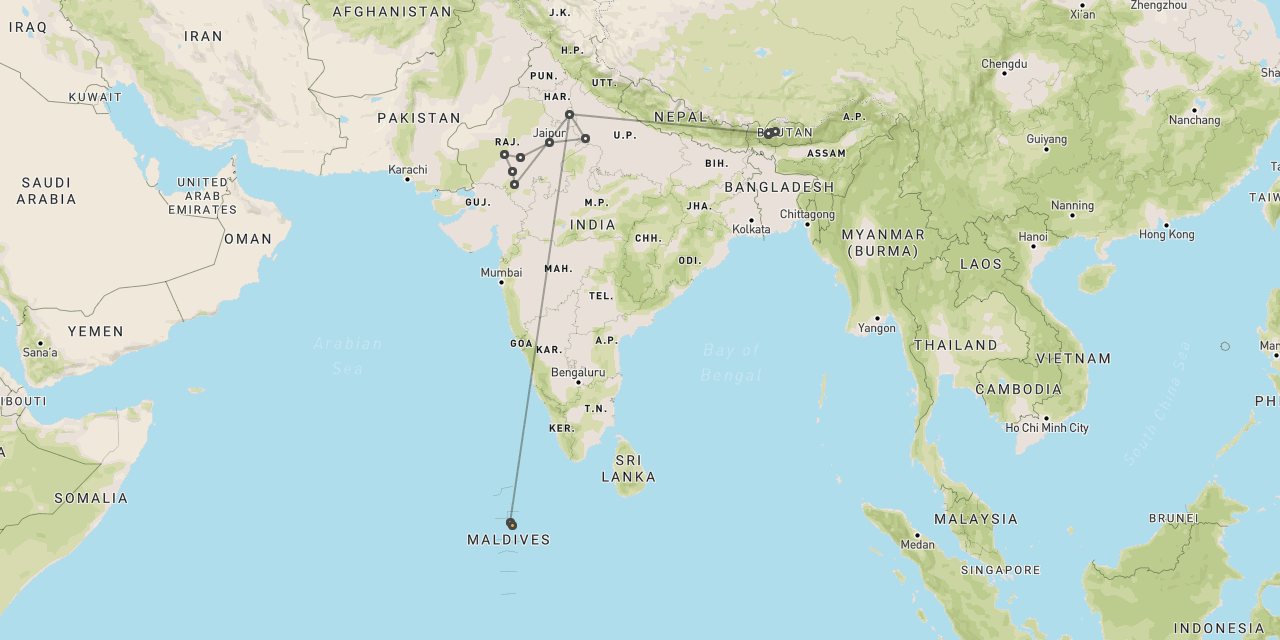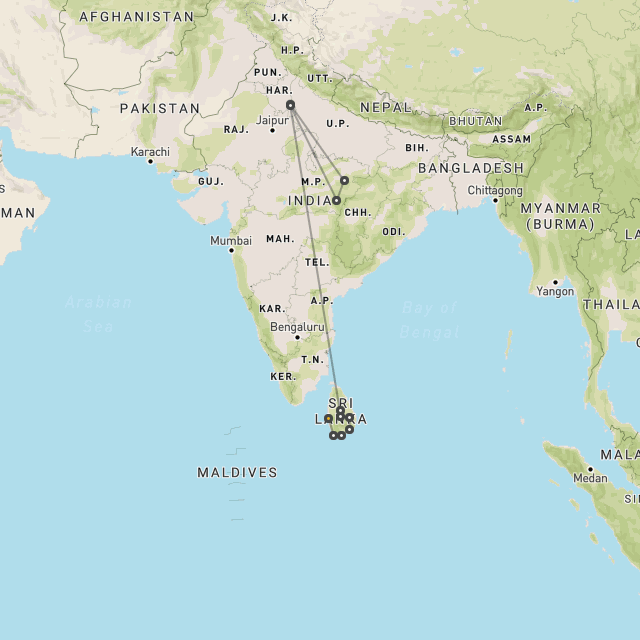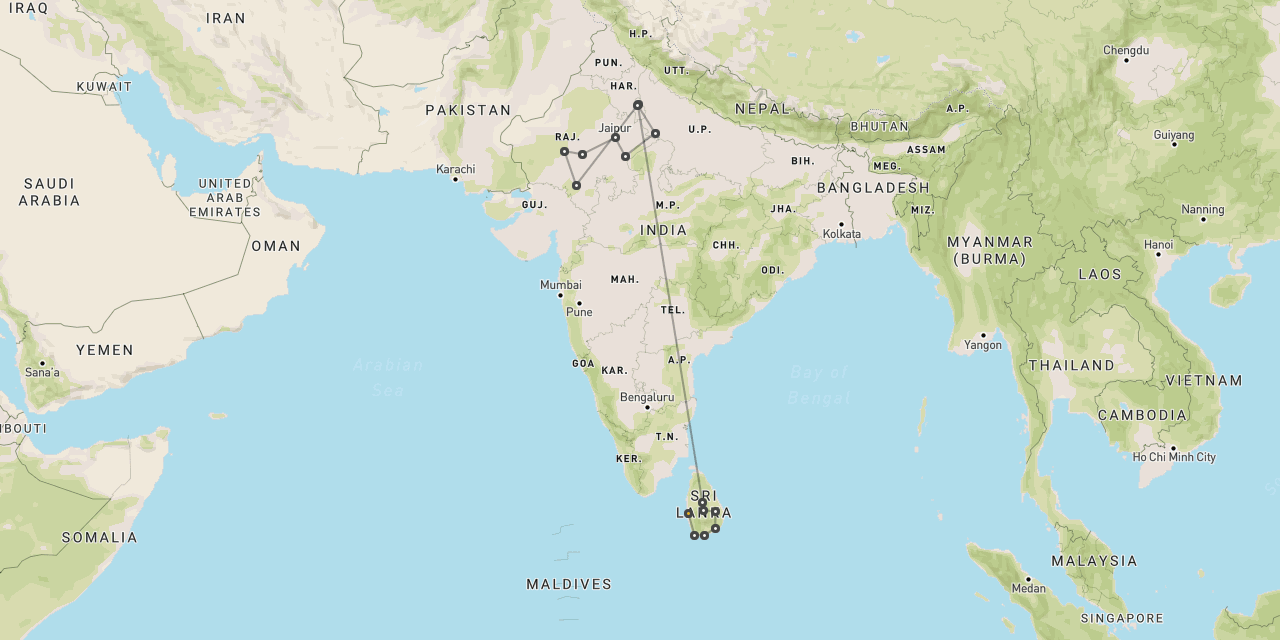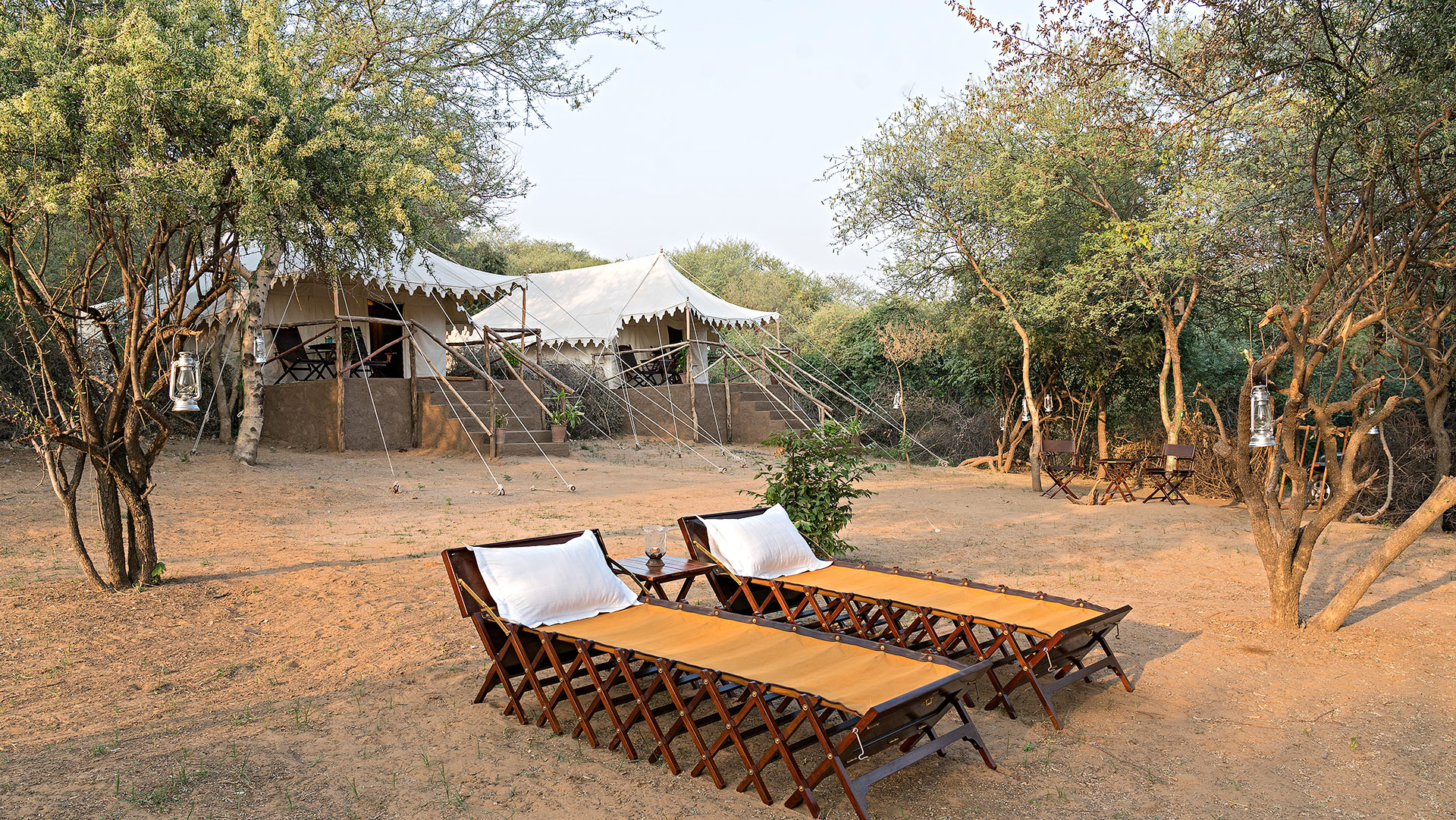
Dera Amer
Dera Amer
is an elephant-focused camp
in the Jaipur area
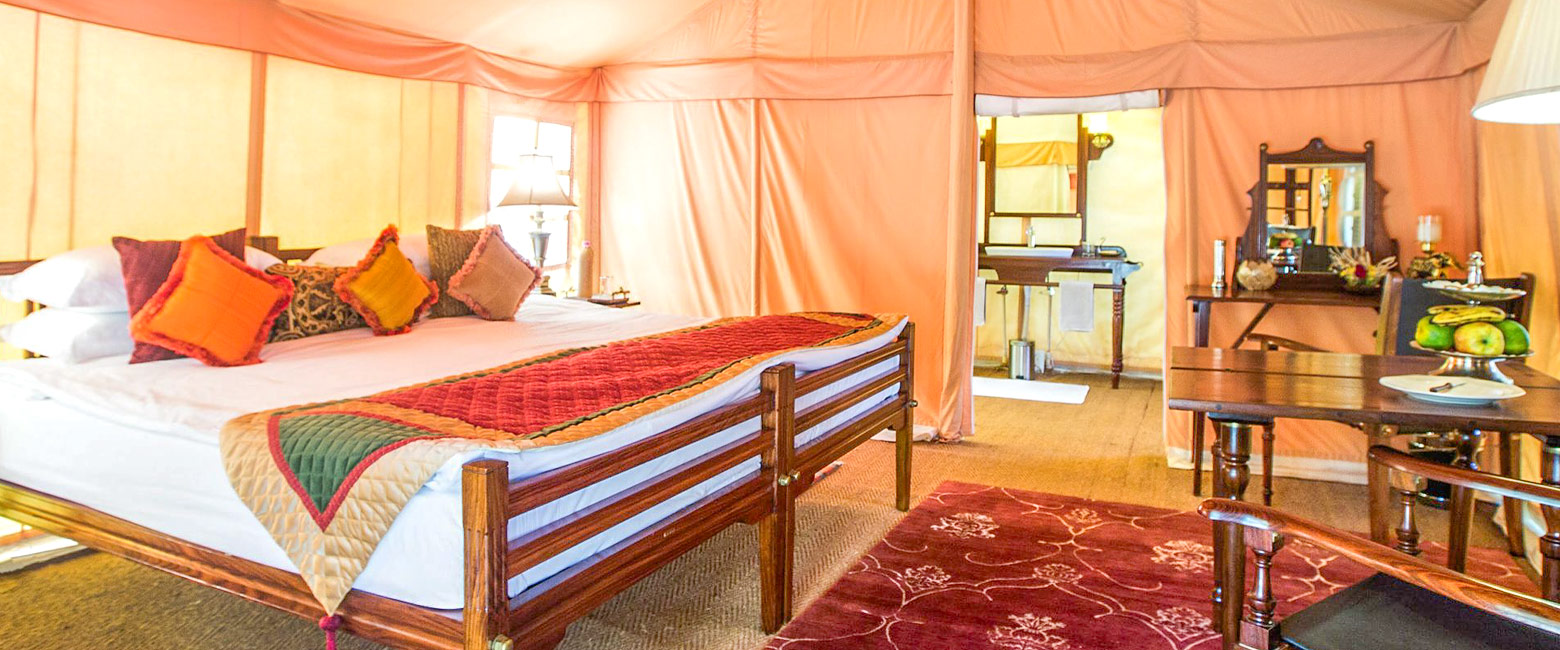
hanging out with elephants is extremely cool
Set about 15 km north of the city of Jaipur in Rajasthan, Dera Amer is a high quality safari-style property.
Back in 1981 the Singh family acquired a large 73 hectare plot of neglected scrubland, with the intention of returning it to its natural state.
Having largely achieved that objective, in 2008 the family established Dera Amer, a small tented camp, where guests could enjoy the wild nature of the local, whilst being within reach of the city of Jaipur.
A prominent feature and main attraction of the camp is its small herd of domesticated elephants, rescued from lives of hard labour in Jaipur. These gentle animals are a major feature of daily life in the camp and spending time with them is a genuine highlight.
The camp supports the local communities by only employing staff from the surrounding villages and by helping to fund local schools.
The camp itself consists of simple open-air dining and lounge areas, around a central campfire.
The camp is offered for the exclusive use for a single group of up to twelve guests, with no more than one family or two couples sharing the camp.
Rooms
Guest accommodation at Dera Amer is in just six luxury tented rooms, set up on low decks, with elegant campaign furniture and attached private bathrooms.
The rooms are fitted with both heating and air-conditioning.
Activities
Dera Amer offers the following local activities, in addition to the various options in nearby Jaipur …
- walking with elephants
- camel rides
- village visits
- bird-watching
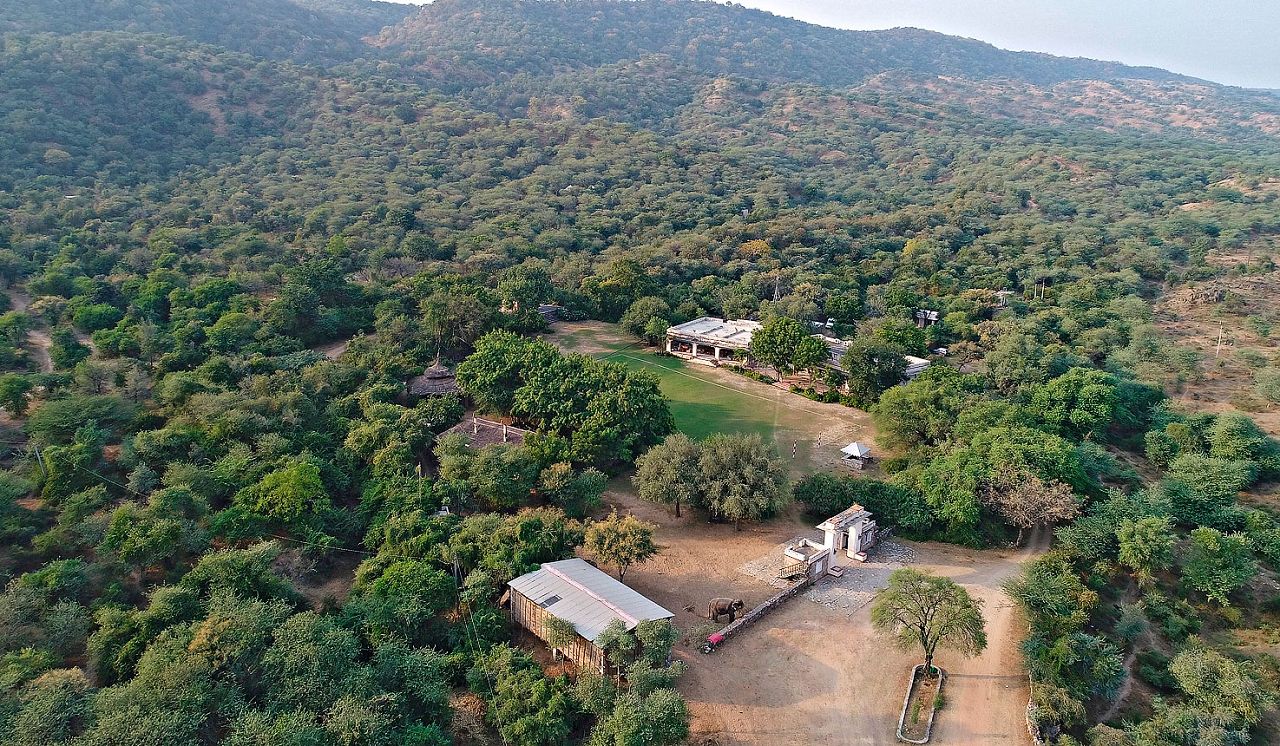
Gallery
Map
The Rajasthan region is usually explored as a private-guided overland safari, starting and ending in Delhi.
We often start these trips by flying from Delhi to either Udaipur or Jodhpur in the south, which are more rural and relaxed, before weaving a route north by road back to Delhi
In this case, Jaipur tends to fall into the tail end of a trip, typically just before Agra and the return into Delhi Airport for departure.
Seasonality
The best time of year to visit the Jaipur area is generally considered to be during Oct-May, although there are considerable climatic variations over that period.
October is the transition period between the end of the monsoon rains and the start of the cool dry season. During the month daytime temperatures usually rise to around 34C/93F, whilst the nighttime low temperatures hold up around 20C/68F. However the rainfall is much lower, dropping to around 25mm (1”) per month. Sunshine is around 8 hours per day (around 75% of daylight hours), meaning that skies are usually clear.
During Oct-Nov the Hindu festival of Diwali sees thousands of oil lamps being lit across the city. The main attractions may be closed, but evenings are filled with fireworks and bonfires.
Nov-Feb is the main cool dry season. During this period the daytime temperatures usually rise to around 25C/77F, whilst the nighttime low temperatures plunge to around 9C/48F. There should be very little rainfall. Sunshine is around 8 hours per day (around 80% of daylight hours), meaning that skies are usually clear.
Mar-May is the hot season, the often uncomfortable build-up to the main monsoon. During this period the daytime temperatures can climb steeply to around 37C/99F, whilst the nighttime low temperatures are up around 23C/73F. Rainfall usually increases slightly, from almost nothing in March to around 25mm (1”) in May. Sunshine is around 8 hours per day (around 75% of daylight hours), indicating that showers tend to be occasional, set against a usually clear sky.
During March the The Hindu festival of Holi is celebrated, during which paint is thrown all over the participants during vibrant street parties. You can either join in and get covered, or watch on from the various rooftop restaurants.
June is the transition month ahead of the main monsoon rains, often with rather uncomfortable conditions. During the month the daytime temperatures can climb very steeply to around 40C/104F, whilst the nighttime low temperatures remain up at a stifling 28C/82F. Rainfall climbs to around 50mm (2”) over the course of the month. Sunshine is around 7 hours per day (around 45% of daylight hours), meaning that skies are often overcast as the monsoon clouds gather.
Jul-Sep is the main monsoon season and is generally considered to be the least favourable time to visit. During this month the daytime temperatures drop off slightly to around 34C/93F, whilst the nighttime low temperatures remain up at a stifling 24C/75F. Rainfall climbs to around 175mm (7”) per month. Sunshine drops to around 5 hours per day (around 35% of daylight hours), meaning that skies are very often heavily overcast.
Getting there
The Jaipur area is usually reached by road, connecting into trips as follows …
- Delhi : 200 km to the northeast
- Agra : 225 km to the east
- Ranthambore : 125 km to the southeast
- Jodhpur : 300 km to the southwest
the elephants can also be visited as a day trip out of Jaipur
let us know your thoughts about India
and we will help you create the perfect safari
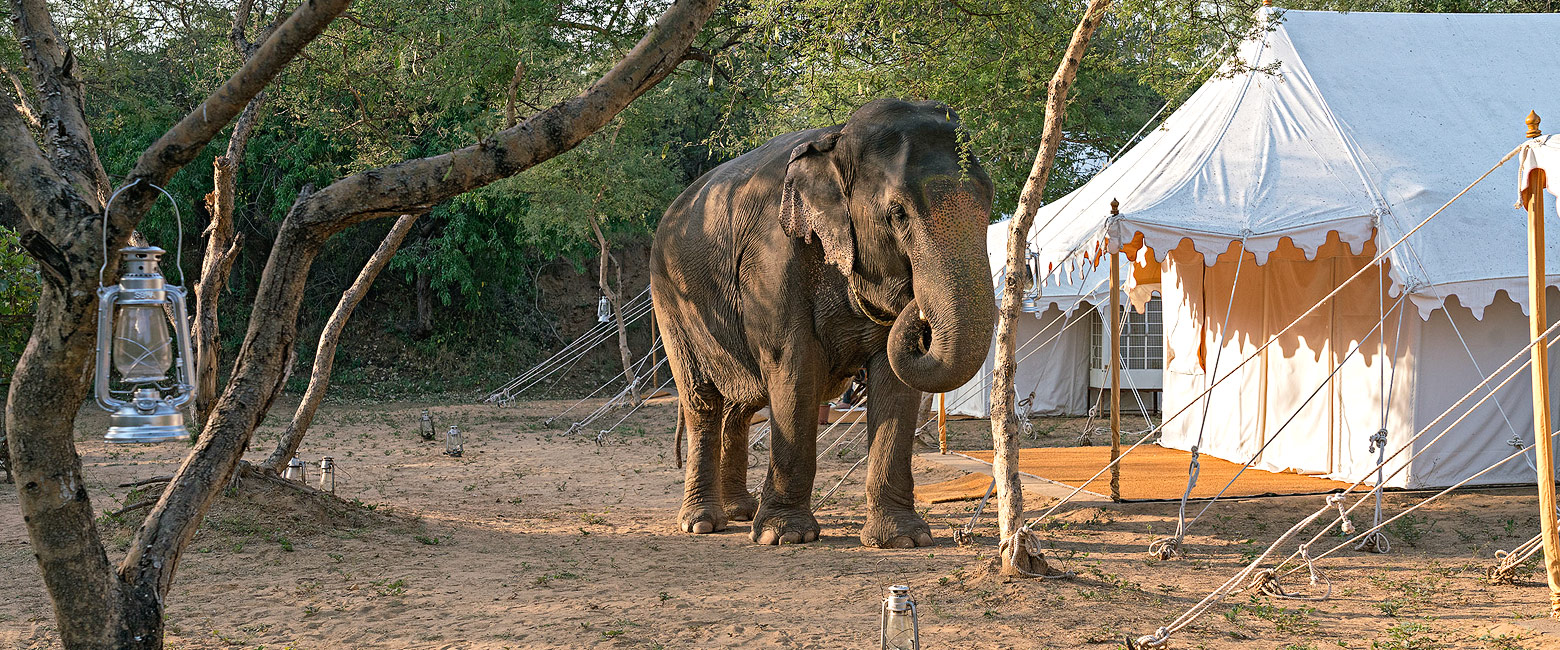
Extraordinary tailor-made adventures,
from earthy and edgy to easy and extravagant
From around USD 2500 per person, you set the ceiling

Get started on your trip
It’s never too soon to get in touch, we are here to help with every stage of your planning.
Sample Trips
Here are some of our popular trip shapes
Best Lodges
We regularly inspect and photograph all of the the best lodges, to ensure that we always recommend the most suitable options
Key Locations
Take a look around related locations. Click ‘View more’ to explore locations further afield.































